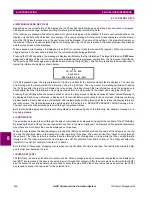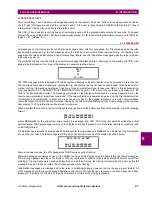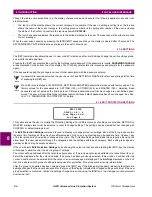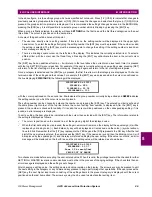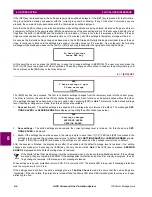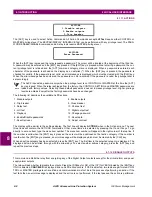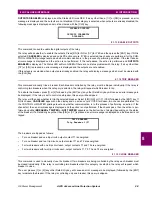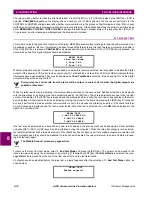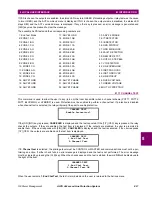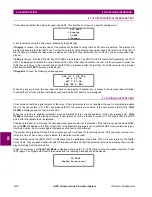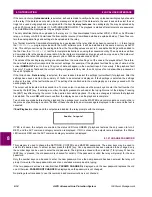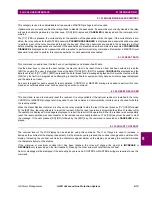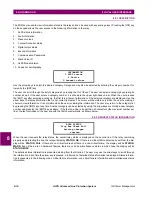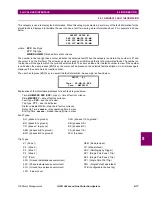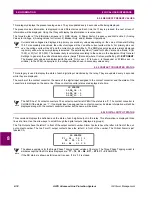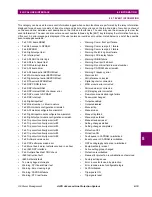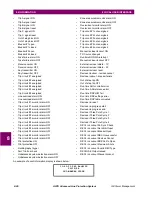
8-16
ALPS Advanced Line Protection System
GE Power Management
8.2 INFORMATION
8 LOCAL USER INTERFACE
8
8.2 INFORMATION
8.2.1 DESCRIPTION
The [INF] key is used to view information stored in the relay and can be used with any privilege level. Pressing the [INF] key
on the keypad allows the user access to the following information in the relay.
1.
ALPS status information
2.
Fault information
3.
Present values
4.
Contact Converter status
5.
Digital output status
6.
Events information
7.
Communication Passwords
8.
Station/Line ID
9.
ALPS Model/Version
10. Snaps hot oscillography
Use the arrow keys to select the desired category. Categories may also be selected by entering the category number fol-
lowed by the [ENT] key.
The user can scroll through the list of categories by pressing the
↑
or
↓
keys. The user can select a category by entering its
number as well. If the user enters a category number, it is echoed in the upper right-hand corner. When the user presses
the [ENT] key after selecting a category, the first three items of information of the selected category are displayed. Use the
arrow keys to display information that is not currently display. The cursor will be visible only when the user is making a
choice to view information. It is not visible while the user is viewing the information. The user may return to the category list
by pressing the [INF] key at any time. Another category can be selected by using the arrow keys or entering a new category
number and pressing the [ENT] key as above. If the text on a line is longer than 20 characters (the maximum number per
line), the text continues on the next line with the first character blank, as shown below.
8.2.2 REQUEST STATUS INFORMATION
When the user requests the relay status, the overall relay status is displayed on the second line. If the relay is working
properly and protecting the line, the relay will display STATUS: OK. If there is a critical failure detected by self-test, the dis-
play will be STATUS: FAIL. If there are no critical failures but there is a non-critical failure, the display will be STATUS:
WARN. Even if there are no hardware failures, there may still be miscellaneous status in which case the display will be
STATUS: MISC.
The detailed status information is presented starting from the third line. The user may use the arrow keys to scroll through
the information. Each time the arrow key is pressed, a full screen of detailed status information is displayed. Status informa-
tion is presented in the following order: critical failure information, non-critical failure information and miscellaneous status
information.
INFORMATION
1.ALPS status
2.Faults
3.Present values
ALPS STATUS
Trip Bus Check Fail
Setting changes
started

